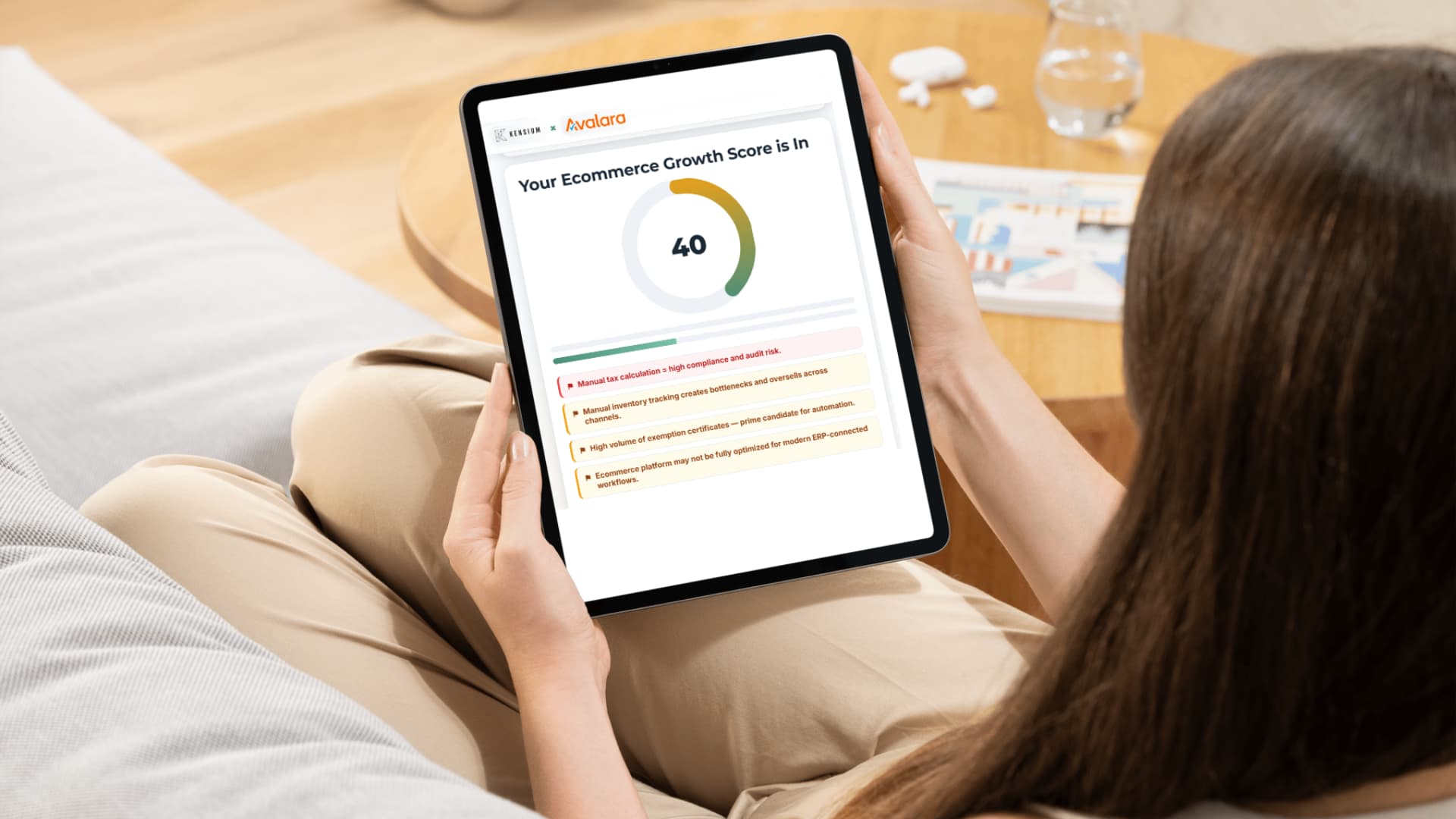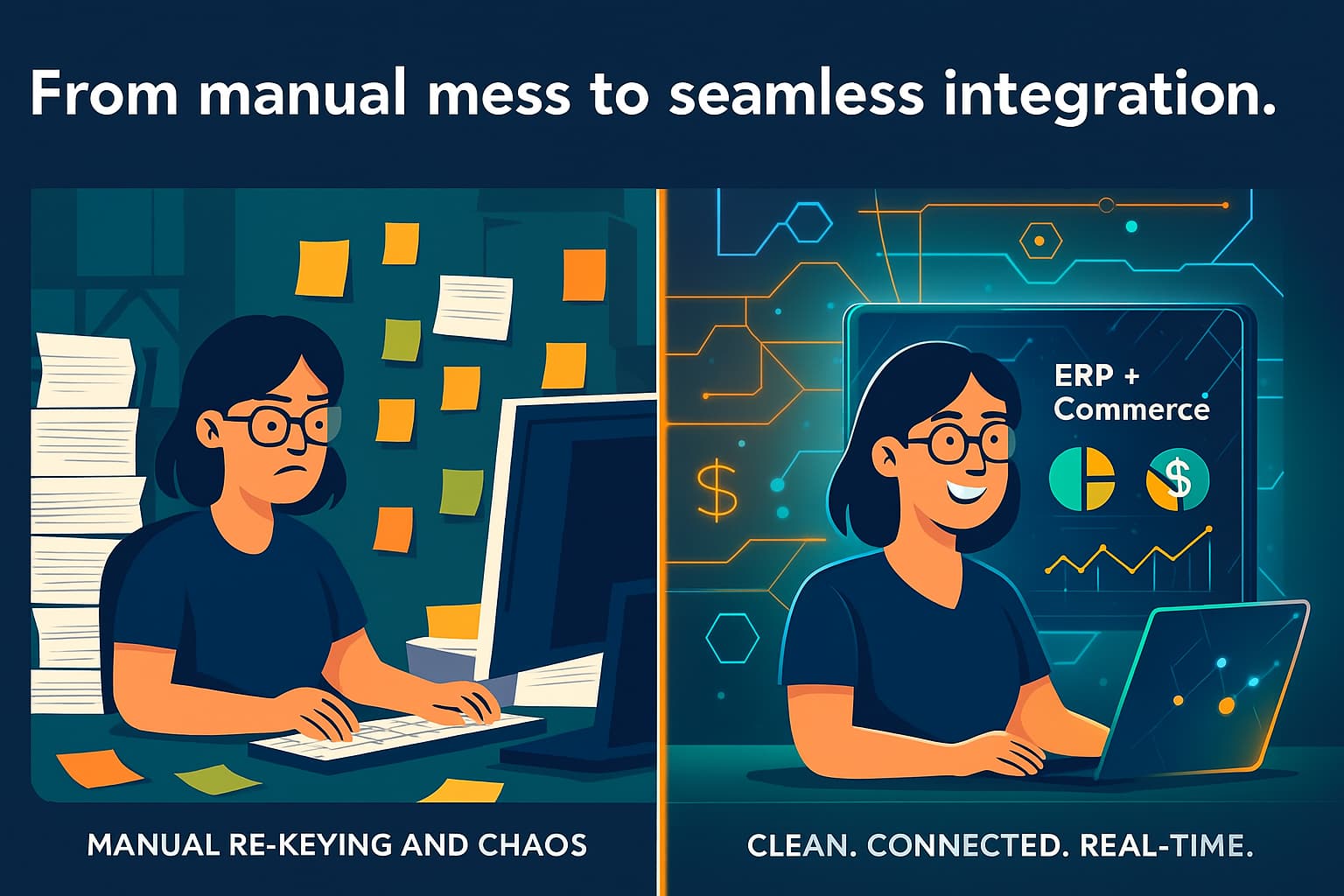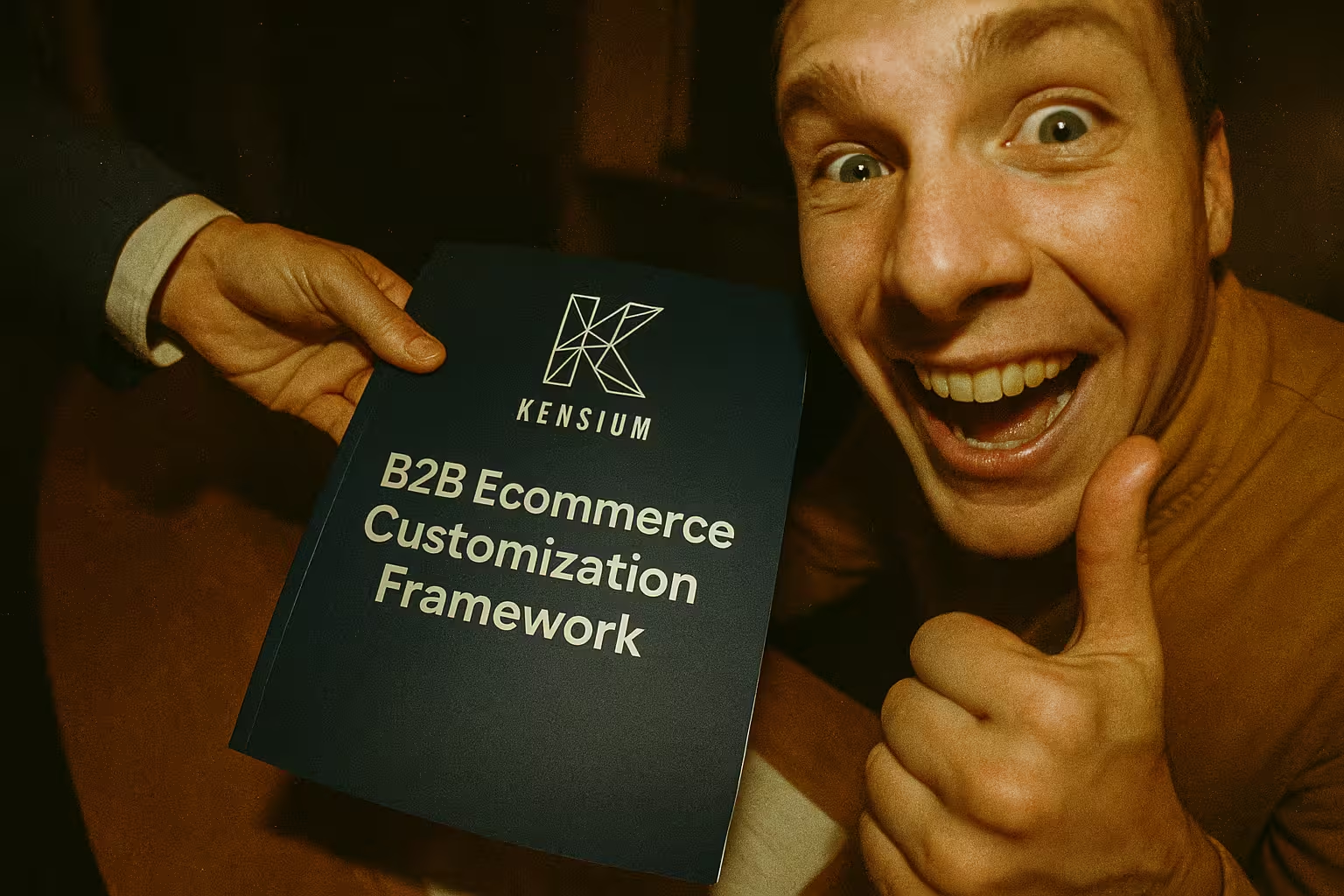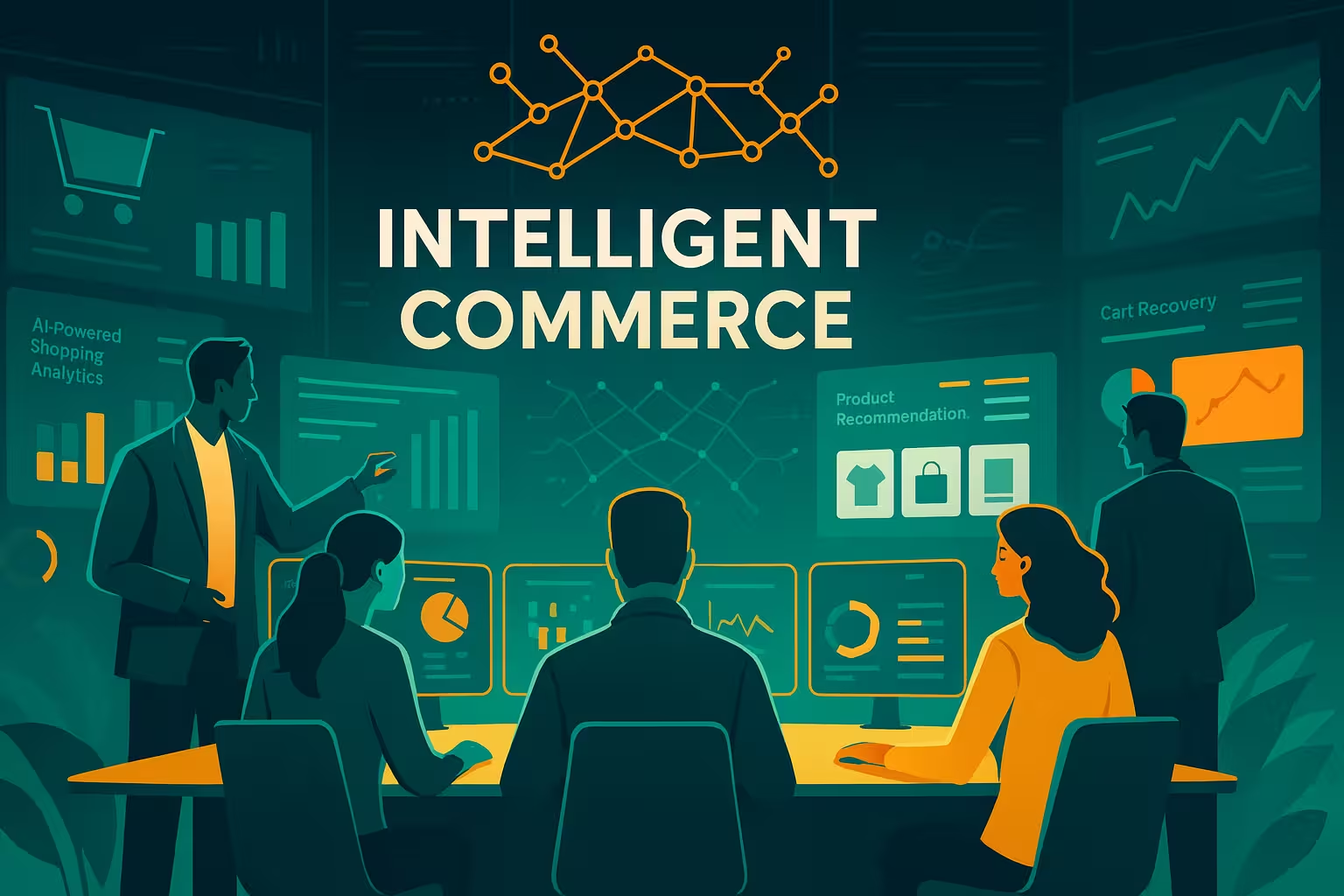
The gap between your eCommerce platform and NetSuite is where sales are lost, customers get frustrated, and growth stalls. Closing that gap is how you scale — fast. Whether you’re selling B2B, B2C, or both, the right integration can turn operational bottlenecks into growth opportunities.
Overview
Scaling eCommerce on NetSuite isn’t just about choosing the right storefront — it’s about integrating it the right way. This guide explores three critical areas for merchants aiming to maximize growth:
- The Integration Challenge – Why many NetSuite users struggle to scale eCommerce and what’s really at stake.
- Platform Comparisons – How Adobe Commerce, BigCommerce, and Shopify Plus perform for B2B and B2C success.
- Integration Best Practices – What works, what doesn’t, and how to avoid costly mistakes during your integration journey.
The Integration Challenge: Why It Matters
Disconnected systems kill momentum. Without a reliable sync between your eCommerce platform and NetSuite:
- Orders get delayed because fulfillment teams don’t have real-time updates.
- Inventory accuracy drops, leading to overselling or canceled orders.
- Pricing mismatches create confusion and erode trust.
- Manual work piles up, costing time and introducing errors.
These breakdowns hurt customer experience, waste staff hours, and limit your ability to grow into new channels or handle seasonal spikes.
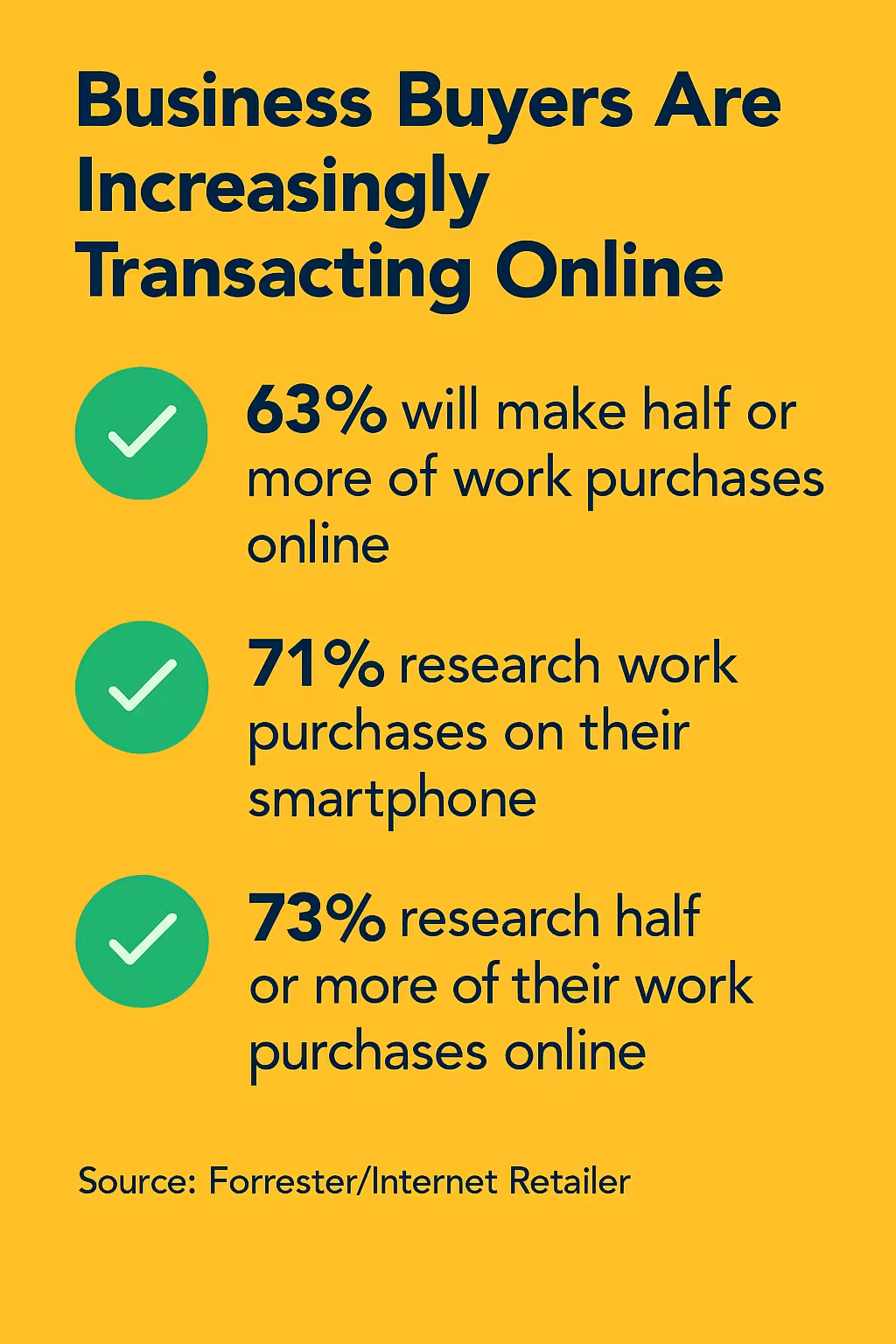
Platform Comparisons: How Leading Options Stack Up
Adobe Commerce: Built for Customization
If your business demands total control over storefront functionality, design, and workflows, Adobe Commerce delivers.
Strengths:
- Deep B2B functionality including shared catalogs, punchout integrations, and EDI support.
- Highly customizable thanks to open-source architecture and extensive developer resources.
- Scalable architecture that can handle massive catalogs and high transaction volumes.
- Granular user permissions to manage complex approval workflows and role-based access.
Challenges:
- Requires dedicated technical expertise for setup and maintenance.
- High total cost of ownership due to licensing and custom development.
- Needs robust hosting and ongoing optimization for peak performance.
Best For: Large enterprises with complex B2B needs, high SKU counts, and either in-house or outsourced development teams.
BigCommerce: Fast, Flexible, and Integration-Ready
BigCommerce offers the sweet spot between speed to market and ERP integration depth.
Strengths:
- Ease of use with a clean, intuitive interface.
- Rich built-in features for B2B, SEO, and product management without heavy reliance on apps.
- Scalable for small to large businesses looking to grow.
- No transaction fees for merchants.
Challenges:
- Customization limitations compared to open-source platforms.
- Some B2B and multi-storefront features are still maturing.
- Change management costs may apply for minor updates.
Best For: Mid-sized B2B and B2C businesses that want built-in functionality and quick deployment without deep technical resources.
Shopify Plus: D2C Simplicity with B2B Ambition
Shopify Plus dominates in DTC simplicity but can be extended for B2B with the right strategy.
Strengths:
- User-friendly setup ideal for non-technical teams.
- Extensive app ecosystem with thousands of integrations for added functionality.
- Secure and reliable with SSL, backups, and 24/7 monitoring.
- Built-in marketing tools for campaigns, abandoned cart recovery, and social selling.
Challenges:
- Limited native B2B features — often requires third-party apps or custom dev.
- Transaction fees when using third-party payment gateways.
- Design/backend flexibility constraints.
- International limitations with some payment options.
Best For: Small-to-medium DTC brands and startups looking for speed and simplicity, with the budget to extend into B2B.
Why Integration Matters
ERP–eCommerce integration transforms how you operate:
- Operational Efficiency – Real-time syncing of orders, inventory, and fulfillment eliminates manual data entry and reduces errors.
- Improved Customer Experience – Accurate product availability, pricing, and faster delivery.
- Scalable Growth – Handle new channels, higher traffic, and seasonal spikes without system breakdowns.
- Data-Driven Decisions – Unified sales, inventory, and customer insights inform smarter strategies.
Businesses with ERP–eCommerce integration reported a 62% increase in sales of products and services.
Source: Wall Street Journal/Deloitte
What is ERP-Connected Commerce?
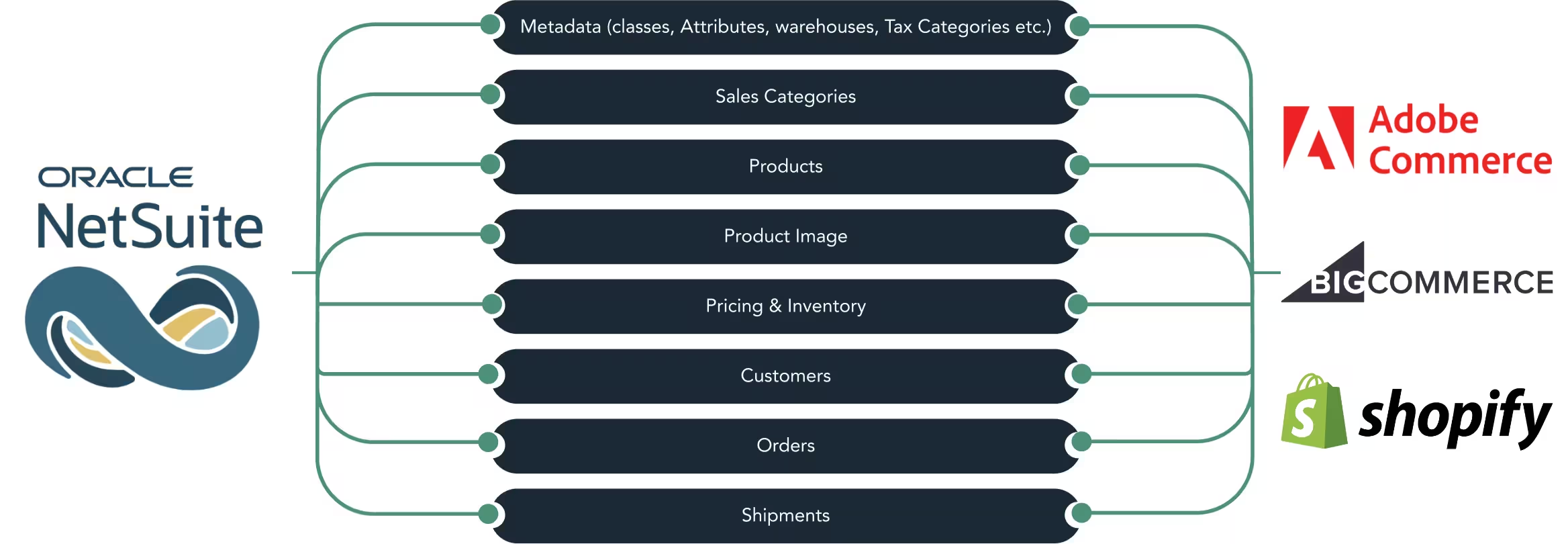
A seamless connection between your eCommerce platform and NetSuite ERP, creating a single source of truth for orders, inventory, pricing, and customer data.
What to Look for in a NetSuite–eCommerce Integration
- Real-time sync for inventory, orders, pricing, and customer records.
- Customer-specific pricing directly from NetSuite.
- Full order lifecycle visibility (quote → fulfillment → invoice → return).
- Multi-site and multi-channel support from one NetSuite instance.
- Secure, role-based access control.
- B2B self-service features like reorders, invoices, and approvals.
Three Ways to Integrate NetSuite with eCommerce
Real-World Results
Company: T3 Micro – Manufacturing / Beauty Tech
- Challenge: Data errors, missed orders, site slowdowns during peak traffic.
- Solution: ERP-connected commerce with 3PL automation.
- Outcomes: 10× order capacity, real-time order and inventory updates, streamlined fulfillment.
Company: Augustinus Bader – Skincare & Beauty
- Challenge: Manual order/return workflows, no real-time sync across systems.
- Solution: NetSuite-integrated commerce with automated workflows.
- Outcomes: Explosive growth, increased inventory accuracy, faster fulfillment and returns.
Ready to See What Works Best for You?
You don’t need to figure out your NetSuite–eCommerce integration alone. Start by evaluating your current setup. Are your systems syncing in real time, or are you constantly working around limitations? Define what integration success looks like for your business, whether it’s speed, scalability, self-service, lower support volume, or all of the above.
Then, take the next step with a free integration audit. Our team will review your platform, architecture, and NetSuite workflows and give you a tailored roadmap to remove bottlenecks and unlock growth.








.png)






